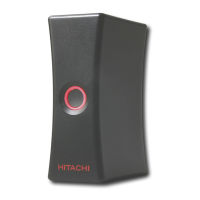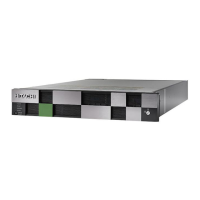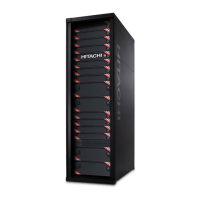Preface
ix
Hitachi Unified Storage VM Product Overview Guide
• Added File Module information to chapters 1, 2, and 3.
Referenced documents
A complete list of both HUS VM block module and file module documentation
is located in Hitachi Unified Storage VM user guides on page A-1.
Document conventions
Hitachi Data Systems user manuals use the following typographic
conventions as needed to clarify information.
Hitachi Data Systems user manuals use the following icons as needed to
draw attention to information.
Convention Description
Bold Indicates the following:
• Text in a window or dialog box, such as menus, menu
options, buttons, and labels. Example: In the Add Pair
dialog box, click OK.
• Text appearing on screen or entered by the user. Example:
The -split option.
• The name of a directory, folder, or file. Example: The
CacheInfo.csv file.
Italic Indicates a variable, which is a placeholder for actual text
provided by the user or system. Example: copy source-file
target-file
Angle brackets are also used to indicate variables.
Monospace Indicates text that is displayed on screen or entered by the user.
Example: # pairdisplay -g oradb
< > angle brackets Indicates a variable, which is a placeholder for actual text
provided by the user or system. Example: # pairdisplay -g
<group>
Italic is also used to indicate variables.
[ ] square brackets Indicates optional values. Example: [ a | b ] indicates that you
can choose a, b, or nothing.
{ } braces Indicates required or expected values. Example: { a | b }
indicates that you must choose either a or b.
| vertical bar Indicates that you have a choice between two or more options
or arguments. Examples:
[ a | b ] indicates that you can choose a, b, or nothing.
{ a | b } indicates that you must choose either a or b.
Icon Meaning Description
Tip Helpful information, guidelines, or suggestions for
performing tasks more effectively.

